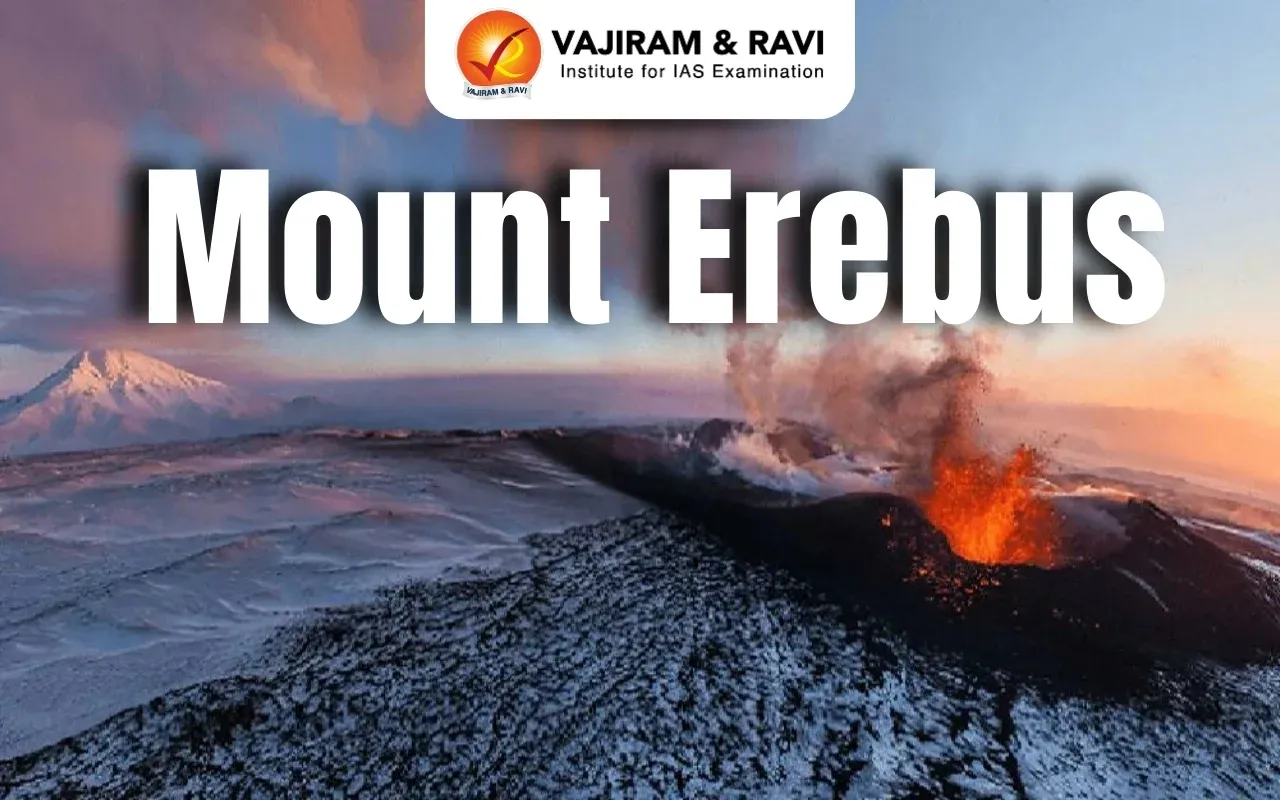Mount Erebus
05-03-2025
06:30 AM
1 min read

Mount Erebus Latest News
Beneath Antarctica’s Mount Erebus, a hidden world of volcanic ice caves harbors thriving microbial life, offering a glimpse into how life could exist on alien worlds.

About Mount Erebus
- It is the world’s southernmost active volcano.
- It is located on the western half of Ross Island, off the coast of Antarctica in the Ross Sea.
- It is a glaciated intraplate stratovolcano, part of the Ring of Fire that encircles the Pacific Ocean basin.
- It was discovered in 1841 by the British explorer Sir James Clark Ross, who named it after his ship, the Erebus.
- Its summit is 12,448 feet (3,794 meters) above sea level, making it the second tallest volcano in Antarctica, after Mount Sidley.
- It is also one of only a few volcanoes in the world that contain an active lava lake.
- The lava within the lava lake is alkalic in composition. Alkalic lava is common in rift volcanoes.
- It has been continuously active since 1972. Most eruptions are small and Strombolian in character, tossing bombs onto the crater rim.
- The largest Antarctic settlement—McMurdo Station, operated by the United States—stands within sight of the volcano (about 40 kilometers or 25 miles away).
Mount Erebus FAQs
Q1. Where is Mount Erebus situated?
Ans. It is located on the western half of Ross Island, off the coast of Antarctica in the Ross Sea.
Q2. Is Mount Erebus in the Ring of Fire?
Ans. Mount Erebus is part of the Ring of Fire that encircles the Pacific Ocean basin.
Q3. Is Mount Erebus still active?
Ans. Mount Erebus is the world’s southernmost active volcano.
Source: IDR
